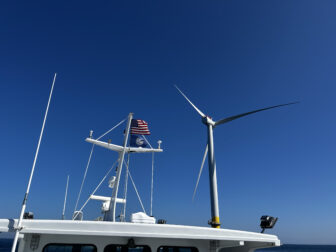Who said anything about qualifications?
I never thought I’d be writing a piece on media and messaging. I’m a government major at the University of Maryland going into my final semester as an undergraduate. I’m looking to further my education with a masters in public policy with a specialization in environmental policy. In the student activist group UMD for Clean Energy that I’ve been involved in since the spring semester of 2007, I’ve been the boots on the ground guy getting petition signatures and power vote pledges, the Political Liaison who handled the policy aspects of the campaign like organizing lobby meetings, and last fall I had my first stint as the Campaign Director for the group. Despite my responsibility never being media and messaging, it’s in this area that I feel I’ve learned some of the most valuable organizing lessons.
When applied to our group’s efforts last semester, our new approach to media became one of the most powerful engines for our local campaign on making green issues front and center in our College Park City Council elections, and complimented all of the other aspects of our campaign beautifully. At the end of the semester, core members of UMD for Clean Energy tried to put our finger on how and why media had been invaluable to our campaign, but usually our guesses didn’t go beyond “wow”. This is my imperfect yet necessary attempt to explain what happened, with the hope that other groups can gain from it, and at least so I can convey how important this aspect of the youth climate movement is. By the way, I’ve committed the cardinal sin of making this a longggg post, but it’s worth it so please read.
“This was a lot more efficient than knocking on 20,000 doors”
Taking a step back, my introduction to media came in the spring of 2008. I wrote a guest column titled “Gravity is a Hoax” in our school/city newspaper, the Diamondback. The satirical column imitated global warming deniers, and got quite a reaction in comments and e-mails. The Diamondback staff took notice and one sample column later, I was a hired opinion columnist. Since then, I’ve written a bi-weekly, sometimes weekly opinion column, which 95% of the time has focused on environmental issues. Writing opinion columns was enlightening in that I realized with a readership of nearly 20,000, I could consistently get a story, argument, or message out to a lot of people with only 2-3 hours work. This was a lot more efficient than knocking on 20,000 doors(not to mention more fun than canvassing!). One thing I was good at that made writing op-eds work well for me was in crafting my message in the column. At the start, a lot of my columns were rough around the edges because of my inexperience, but as time has passed by, I’ve become a natural at taking complex and convoluted arguments/issues and explaining them in 550 words to a college audience.
A media plan without new media is half a plan
Then came the blog in August of 2008. I wish I could say I made this as a tactical move or with some specific purpose, but I was honestly just sitting around my computer one night a couple weeks before the start of school, and made a blog out of boredom. Being ever so serious, I named it after a nickname soccer teammates gave me many years ago “The Dernogalizer”. At first, it was just an outlet to write my thoughts about environmental/energy issues, but readership has grown from 5-10 people a day to regularly topping 200 views a day, along with averaging hundreds more during more intense periods such as the house climate bill debate, and the Copenhagen climate conference. Through cross-posting at Itsgettinghotinhere, the primary new media outlet for the youth climate movement, as well as reading and interacting with other climate bloggers on the web, I’ve gained a whole new outlook on online media. I’ve seen bloggers drive stories hidden away from the public eye, and push them out into the mainstream news cycle. I’ve seen the terms of the debate on issues set by bloggers on the left and the right. The emerging reality we must face is that as newspapers cut their staffs, and some go out of business, a lot of news stories are going to be found online, defined by the bloggers. Media outlets will rely more and more on the blogs as leads for stories that they no longer have the resources to pursue on their own. Therefore, any media and messaging game plan is going to have to rely more and more on online media outlets and blogs. Simply sending out a press release to newspapers won’t cut it.
“a new, heightened focus”
When I became the campaign director of UMD for Clean Energy, at the very top of my list for things I wanted us to do differently was media. In the past, myself and others in our group felt we had treated media as shooting off a press release to a couple papers and calling it a day. Even I had viewed media up to that point as extra credit to our actual organizing efforts. Yeah, it would be nice to focus more time on media, but we were always busy doing more important things like rallies, petition signatures, and lobbying politicians. This isn’t a knock on previous student leaders in our group whose job was media, it was just that the group as a whole didn’t understand the value, and didn’t put the necessary time, resources, and thought into it. Often when we got media in the past, most of the group including myself was oblivious to it. My outlook gradually changed as I worked for the Diamondback and interacted with online blogs and bloggers. It came to a full swing during the summer climate bill debate, where I saw how important the media portrayal of an issue was, where environmentalists completely screwed up Waxman-Markey as far as messaging goes. So when I met with our newly elected media director Kenny Frankel over the summer, I told him my goal was for us to have a new heightened focus on the responsibilities of his position, and make it an integral part of the group’s efforts, rather than a sideshow.
Who said anything about qualifications?
The interesting thing about Kenny is he, like me, has absolutely no journalism experience. He wanted to run for a leadership position in the group, and we were lacking someone willing to do media director, so I suggested he run for it. Before the start of the semester, we had to google how to write a press release, and the difference between a press release and a press advisory. More on why this matters at the end.
Having a website, for real
Previously, we had never bothered with having a well kept website. We had one in 2007, but it was never used. We also had a Google-site for a semester, but didn’t add much of anything to it. One of the main projects for Kenny, along with the help of our group’s Organizational Director(and co-president) Laura Calabrese was to have a well kept website. So we made a new one, which despite its simplicity has gotten many compliments. We had cool stuff such as picture slideshow of our efforts and links to informational sites, along with the necessary information for our group’s efforts(like media hits) and our group leader’s contact info and bio’s. We put this website on every single flyer for every single event we did. It was at the bottom of every one of our press releases as a source for more information. It was at the bottom of every platform and
FAQ for our campaign we handed out. Oftentimes before we met with a candidate for the city council, they would remark they checked out our group’s website ahead of time for information, and we were also e-mailed by interested students, non-profits, and media outlets throughout the semester. Our website traffic grew gradually over the course of the 2-month campaign. I’ll talk about what it was before the election later.
What’s the Campaign?
The premise behind our campaign was pretty simple. Traditionally in our College Park City Council elections, it only took a couple hundred votes to elect a candidate to the city council, and less than a thousand to elect the Mayor. Students hadn’t been mobilized to vote locally in a long time, and in 2007 something like 7 students voted from the dorms. UMD for Clean Energy decided we would draft a platform on a host of energy, development, transportation, and environmental issues, and meet with every single candidate for the council(this ended up being 16!) about them. We would then endorse what we felt were the candidates that would champion our issues, and mobilize students on a scale no one had before to vote for the greenest candidates. Basically, almost 100% of the student voters would be voting with the environment as the #1 issue. We decided our efforts would culminate on election day with a green march from the center of our campus to city hall to vote. We called the campaign “Green for College Park”. Classes started at the end of August, and the election was on November 3rd, so we had about 2 months to organize.
Framing the Campaign
The reason I keep following the word media with messaging is that every campaign, rally, or piece of legislation needs a winning message behind it. While there’s no applicable blueprint for everything, for us the message needed to be concise, understandable, resonate with the average citizen, opportunistic, and repeated over and over and over again. Here was what we had at the top of our platform
“This past spring, Maryland passed a major global warming bill, the Greenhouse Gas Reduction Act. The investment in energy efficiency, transportation, and clean energy from this bill can create 100,000 jobs for the state by 2015. The question is where are those jobs and that investment going to fall? We think the investment is going to go to the counties and cities that are on the forefront of clean energy policy. Unfortunately, right now Prince George






